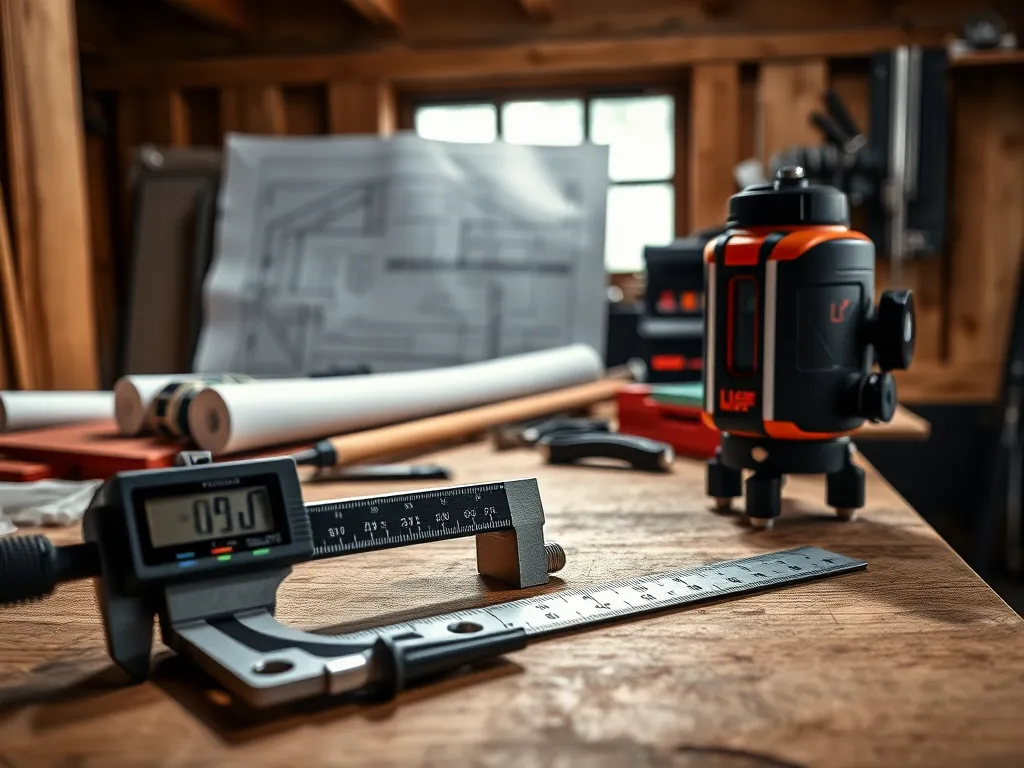Top Tools and Techniques for Measuring Cutting Height Accurately

Tools and Techniques for Measuring Cutting Height Accurately
Accurate measurement of cutting height is critical in various fields such as woodworking, metalworking, and landscaping. In this comprehensive guide, we will explore reliable tools and techniques for measuring cutting height accurately. Understanding these tools and methods will not only enhance your precision in cutting but also improve the overall quality of your finished product.
Mastering grass ruler usage ensures your lawn stays at the ideal height, promoting lush growth and resilience.
To achieve precise cuts, it is essential to utilize the right tools and techniques for measuring cutting height. This article focuses on comprehensive approaches that professionals and hobbyists can employ to maintain accuracy in their projects. From traditional measuring tools to advanced digital devices, we will provide valuable insights on how to select and use these tools effectively for optimal results.
Using lawn height tools can significantly improve the health and appearance of your grass throughout the growing season.
In addition to providing a thorough overview of the tools and techniques for measuring cutting height accurately, we will delve into best practices to ensure measurement reliability. Whether you are working on a detailed woodworking project or managing large garden spaces, understanding the significance of measurement accuracy will lead to better outcomes and reduce material waste. This guide will serve as your go-to resource for mastering cutting height measurement.
By implementing the tools and techniques for measuring cutting height accurately discussed in this article, you will develop the skills required to perform quality control checks and improve the consistency of your work. Furthermore, regular maintenance and calibration of your measuring tools will contribute to long-term accuracy and efficiency. Let’s explore the various methods and tools available for achieving precise cutting heights.
Ultimately, mastering the tools and techniques for measuring cutting height accurately will empower you to take your craftsmanship to the next level. Now, let’s explore precision measuring tools that play a vital role in achieving accurate cutting heights in various applications.
Understanding mower blade measurement is essential for maintaining an effective and efficient lawn care routine.
Precision Measuring Tools
Calipers are essential tools for measuring cutting height accurately. They come in various types, including vernier, dial, and digital calipers. Each type provides precise measurement capabilities, allowing users to obtain accurate readings of cutting heights with ease. The caliper’s design ensures that measurements can be taken in various dimensions, making it a versatile tool for both amateurs and professionals.
Digital gauges offer another layer of accuracy when measuring cutting height. These instruments provide digital readings that eliminate guesswork, ensuring measurements are precise. Many digital gauges come with features such as depth measurement, memory storage, and data output capabilities, making them an invaluable tool for serious craftsmen looking to achieve the best results.
Laser measuring tools have revolutionized the way cutting height measurements are taken. Offering precision laser technology, these tools can measure distances with remarkable accuracy over various surfaces. They are particularly useful in situations where traditional measuring methods would be challenging, such as large-scale projects or measuring height in hard-to-reach areas.
Protractors are not just for measuring angles; they can also play a crucial role in measuring cutting heights. By aligning protractors with the cutting surface, users can determine specific cutting angles and heights accurately. This is especially valuable in woodworking, where angle accuracy is essential for creating joints and connections.
Measurement Techniques
Using templates is one of the best techniques for consistent height measurement. Templates can be customized to specific heights, allowing them to be used repeatedly for multiple cuts. This method is particularly advantageous in woodworking, where maintaining uniform height is vital for the integrity of the project.
Marking gauges are invaluable in cutting height measurement, especially in woodworking. By setting a marking gauge to a desired height, users can score lines on their workpiece, ensuring all cuts are made to the same height. This technique offers aesthetic precision and simplifies the process of making multiple cuts.
To ensure measurement accuracy, techniques such as double-checking measurements and using reference points are crucial. Always measure twice before making any cuts to avoid mistakes. Furthermore, establishing a consistent reference point can help maintain accuracy and provide a straightforward way to compare measurements across different materials.
Measuring uneven surfaces can be challenging, but employing best practices such as using a flexible measuring tape or adjusting the cutting tool to accommodate the surface can help. Adopting a hands-on approach and frequently assessing the surface area will provide better understanding and accuracy when measuring cutting heights.
Calibration and Maintenance of Tools
Regular calibration of measuring tools is vital for maintaining accuracy. Calibration ensures that measuring devices are functioning correctly and provides a benchmark for readings. Implementing a calibration schedule will allow users to catch any discrepancies in measurements early on and maintain the integrity of their work.
Proper maintenance of cutting measurement tools is essential to prolong their lifespan. Regular cleaning, storage in appropriate conditions, and avoiding exposure to harsh elements will keep tools in optimal working condition. Additionally, wearing out or damaged parts should be replaced promptly to ensure continued accuracy.
Signs that your tools need recalibration can include discrepancies in measurements, wear and tear, or physical damage. It’s crucial to be vigilant about your tools’ performance; any irregularities should prompt immediate attention to avoid compounding inaccuracies over time.
To extend the lifespan of measuring instruments, handle them with care, store them safely when not in use, and follow manufacturer guidelines for upkeep. Understanding your tools and implementing routine checks will lead to better measurement performance and longevity.
Field Applications
Measuring cutting height in woodworking projects involves precise techniques and tools that ensure accurate results. Professional woodworkers often create templates, use calipers for detailed measurements, and employ marking gauges for multiple cuts to achieve the desired height in their workpieces.
In metalworking and machining, accurate height measurement significantly affects the quality of the final product. Professionals use digital gauges and laser tools to measure height effectively, thereby maintaining the integrity and functionality of the components produced.
Height measurement in landscaping and gardening often requires adaptability. Tools like measuring tapes and laser levels can be used to ensure that plants are being set at the correct heights, providing a professional appearance and promoting healthy growth features across landscapes.
Successful cutting height measurement strategies can be seen in numerous case studies, where professionals adopt a holistic approach combining diverse measurement tools and techniques. These strategies contribute to higher quality outcomes and consistency across various sectors such as construction, woodworking, and gardening projects.
Technological Advancements
Innovations in cutting height measurement technology continue to evolve, integrating sophisticated electronics and automating processes. These advancements simplify the measuring process, increase accuracy, and help professionals save time and reduce errors in their work.
Software and applications designed specifically for measuring cutting height have also emerged, enabling users to visualize and track measurements digitally. These technological solutions streamline the design and production process, making it easier to maintain cutting specifications throughout projects.
Automation in measuring tools has significantly enhanced the precision of cutting measurements. Automated systems enable real-time data capture and analysis, reducing human error and providing high levels of consistency in measurement across varied applications.
Future trends in measurement tools and techniques are likely to involve even greater integration of smart technology, improving usability and function in various fields. Continued research and development will lead to more accessible, efficient, and precise methods for measuring cutting height, shaping the future of craftsmanship and manufacturing.
